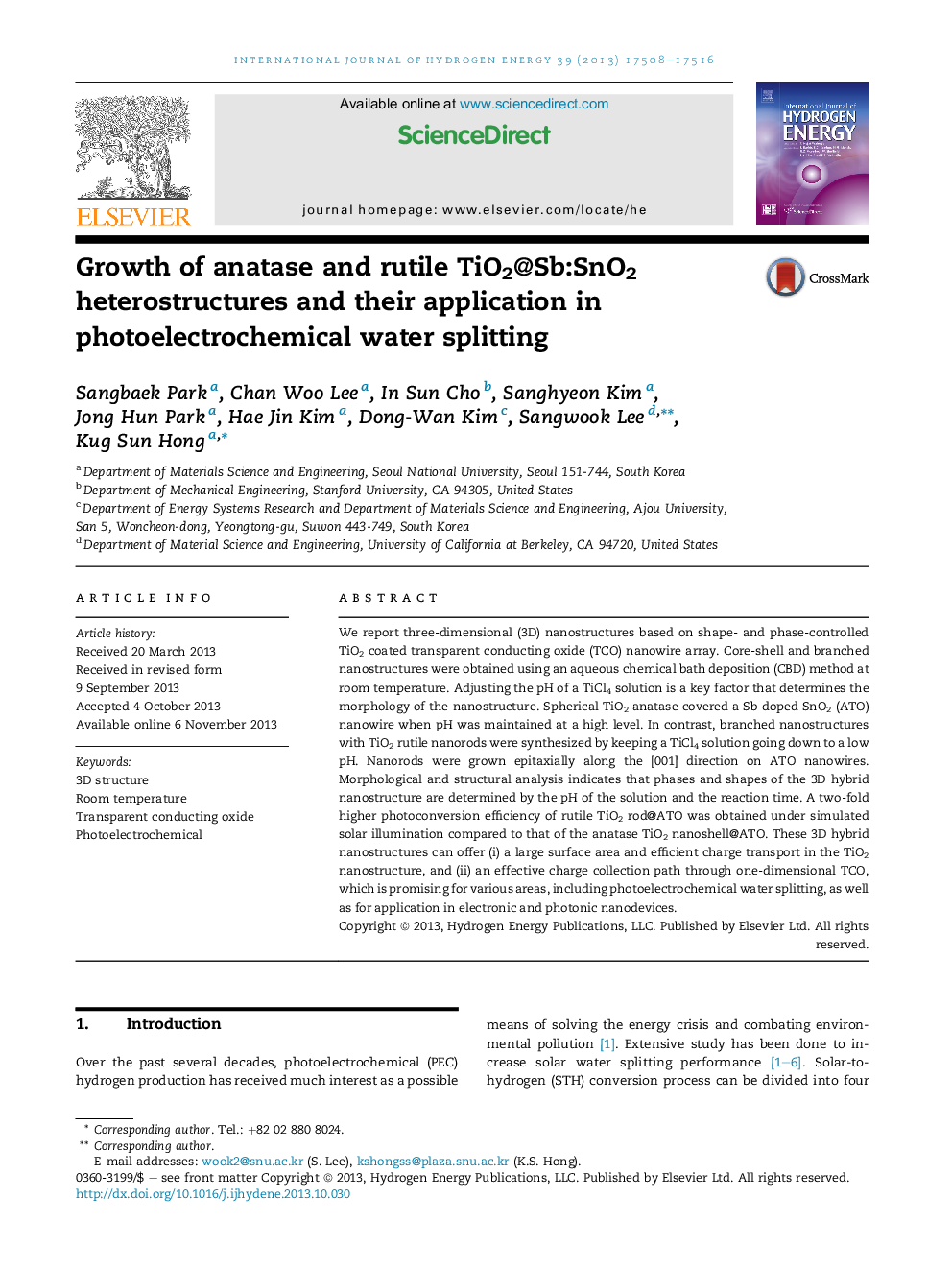| Article ID | Journal | Published Year | Pages | File Type |
|---|---|---|---|---|
| 1272213 | International Journal of Hydrogen Energy | 2014 | 9 Pages |
•Synthesis of three-dimensional TiO2@Sb:SnO2 heterostructures.•Anatase sphere and rutile rod TiO2 was formed by pH control at room temperature.•High photoelectrochemical performance of rutile rod TiO2@Sb:SnO2.
We report three-dimensional (3D) nanostructures based on shape- and phase-controlled TiO2 coated transparent conducting oxide (TCO) nanowire array. Core-shell and branched nanostructures were obtained using an aqueous chemical bath deposition (CBD) method at room temperature. Adjusting the pH of a TiCl4 solution is a key factor that determines the morphology of the nanostructure. Spherical TiO2 anatase covered a Sb-doped SnO2 (ATO) nanowire when pH was maintained at a high level. In contrast, branched nanostructures with TiO2 rutile nanorods were synthesized by keeping a TiCl4 solution going down to a low pH. Nanorods were grown epitaxially along the [001] direction on ATO nanowires. Morphological and structural analysis indicates that phases and shapes of the 3D hybrid nanostructure are determined by the pH of the solution and the reaction time. A two-fold higher photoconversion efficiency of rutile TiO2 rod@ATO was obtained under simulated solar illumination compared to that of the anatase TiO2 nanoshell@ATO. These 3D hybrid nanostructures can offer (i) a large surface area and efficient charge transport in the TiO2 nanostructure, and (ii) an effective charge collection path through one-dimensional TCO, which is promising for various areas, including photoelectrochemical water splitting, as well as for application in electronic and photonic nanodevices.
